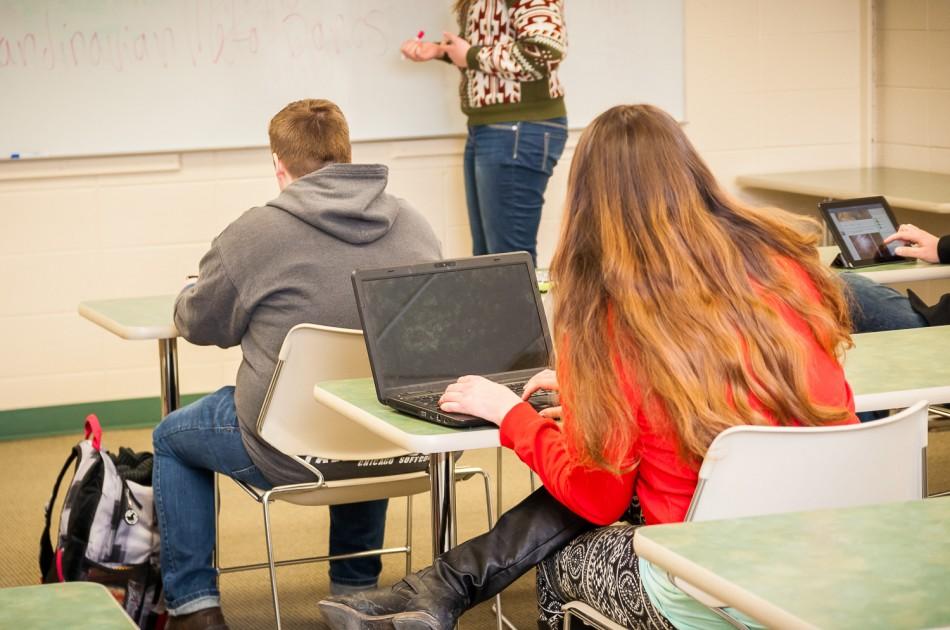Technology in classrooms
The prevalence of electronics in the lives of today’s young adults poses a question: what is the place of technology in the classroom?
The Mirror surveyed 43 Lakeland professors about various types of technology and how they are treated in the classroom. Around 55 percent said they allowed laptops in class and the numbers were similar for tablets.
As far as cell phones, only about 40 percent of professors surveyed said they allowed them in the classroom. According to Karl Elder, Fessler professor of creative writing and poet in residence, he insists cell phones are shut off for several of his classes, but he is not opposed to allowing students to use them on occasion for research. He also acknowledges the risks of allowing laptop use in class.
“What that means is that I have to actually move around the classroom, and the reason I have to is because I’ve seen this before: I’ve taught Core courses in which, even though I walked up behind people, they were so into the computer that they didn’t know that I knew they were shopping,” said Elder.
Similarly, Meg Albrinck, vice president for academic affairs, dean of Lakeland College and professor of literature and writing, is aware of the benefits of computers in the classroom but wary of the risks.
“I think [electronic devices] are such tempting things, but I’ve always erred on the side of trusting my students because I teach literature classes and a lot of the materials that I teach are available online in e-book form or even through Bartleby, and if a student can’t afford the book or doesn’t want to use their resources for a hard copy, use the computer,” said Albrinck.
Trust appears to be a large factor in whether or not a professor allows personal electronics in class.
“I think a lot of it depends upon my judgment as to how invested the individual student is in the course,” said Elder.
He speculates that the likelihood of a student misusing his or her device in class increases if the class is required or an elective as opposed to a class within the student’s major, which he believes would decrease that likelihood.
Albrinck suggests that the classroom environment itself might be a factor.
“If it’s clear to me that the student is not focusing on class, it’s really easy to see that as a teacher because I have a pretty interactive classroom environment, but I do think we need to be able to make sure that our classes continue to engage students in a way that technology is not going to interfere with,” said Albrinck. “In some ways, we are responsible for providing an engaging classroom and the technology can support that, and if it means my student has an [electronic] book in front of them, I’ve got no problem with it being there.”
Elder’s perspective is somewhat more cautious.
“I use it only sparingly as a mode of instruction,” he said. “The reason I don’t use this audiovisual stuff is because the students are saturated with it.”
He notes that students need real interface, and it is important for them to talk to each other and see expressions and gestures. For him, this sentiment extends out of the classroom.
“I think we’re lucky we don’t have the ambulances show up more often, the way these people walk through here looking down,” he said.


